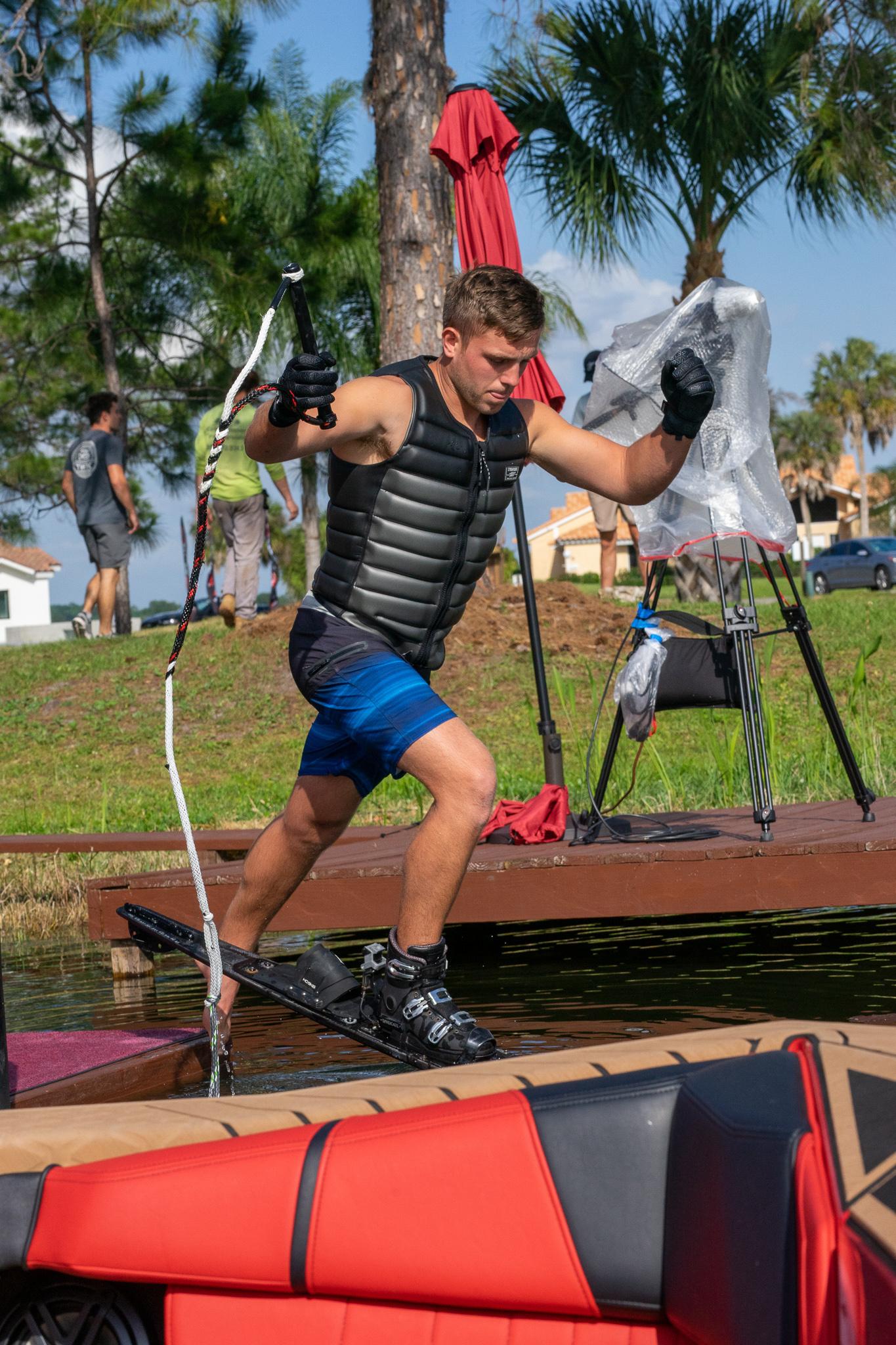
3 minute read
Word with the coach
matt rini
Hips up, shoulders back: this is an age-old tip from the great slalom skiers of the past that still has significant impact on high-level slalom. So many skiers who come to the school are still chasing this elusive position behind the boat. It’s old and it’s simple, yet so many skiers fail to see the ultimate goal; so hips up, shoulders back becomes vague and hard to perfect. Here’s a more modern way to achieve both; and an explanation of why it’s so important.
The goal of finding this stacked position is twofold. One is to become powerful and have leverage through the wakes as the intensity increases from shortening the rope. The second is to become torsionally bulletproof to the boat after the edge change. The way to have both of these things maximized is to understand the function of the ribcage. Let’s take a quick look at a deadlift: imagine deadlifting 80% of max and closing out the deadlift at the top for 10 seconds. How is the body stacked? The bottom of the rib cage and elbows connect as the hips squeeze forward, and the shoulders are slightly behind the hips to counterbalance the weight. The spine is perpendicular to the floor so that much of the force can be supported through the skeleton and not by the small surrounding muscles. The weight is pulling on the shoulder socket, much like the boat is pulling on the shoulder socket through the wakes.
How does that translate to the water? The bottom of the ski is the floor and the skier is trying to keep the skeleton perpendicular to the bottom of the ski by rolling the rib cage upward until it touches the elbows. The skier counterbalances the pull of the boat by having the shoulders slightly behind the hips. This body alignment accomplishes both of the original goals: becoming powerful behind the boat and lowering the leverage point to the boat from the shoulder to the rib cage, allowing the back shoulder to become torsion-free of the boat after the edge change. This freedom from the boat allows the skier to continue the outward swing with the back shoulder, which keeps the skier wide and the line tight.
One Key with the Biggest Impact
Troubleshooting balance:
Rolling the rib cage up to touch the elbows will absolutely move your weight back on the ski. If you feel like you are on your back foot too much, turn the rib cage into the back arm more and that will bring your balance back to having 50-50 pressure in your feet through the wakes. It’s important to remember that the water is an unstable surface. So, in order to stay in balance you must respect the three planes of balance on a slalom ski. A skier who is more compressed (hips back) must have the shoulders more open to the boat to remain in balance. As the ribcage rolls upward, the skier must have the shoulders more closed to the boat to remain in balance. Both ways of skiing can be effective, but a more compressed position will increase torsional vulnerability after the edge change. (Remember one of the goals is to be torsionally bulletproof).
Dry land:
Do a few deadlifts or pick up a weight on the dock and stand there in the most comfortable/stacked position. This will give you a good feeling to try to emulate on the water.












